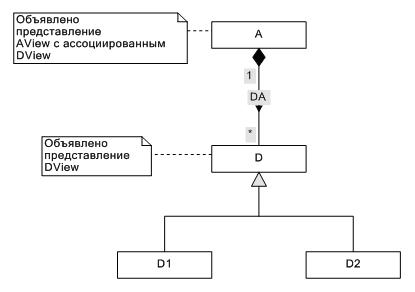For example, you have the following situation:

Class a is detaily D associated aggregation of DA. For A specified view, which is connected with the idea of detail D.
For example, you are reading a data object of type A on presentation AView. Accordingly, as objects of classes D1, D2 legacy from the D, they will also be read by performance DView (views are inherited). However, what to do if they have a better attribute composition, which obyazatelno needs pracitce?
In order to solve the problem, there are adaptive performance. If you declare the view DView adaptive and datalow D1 and D2 to announce the submission of the same names (DView), but with its own attribute structure, then the service data will read detaily D1 and D2 in accordance with it.
In order to specify that the view is adaptive, it is necessary for the Association metalowego view in the attribute AssociatedDetailViewAttribute to initialize the property UseAdaptiveViewsLoading=true.
Example:
[AssociatedDetailView("AView", "D", "DView", UseAdaptiveViewsLoading=true)]
Implementation of the proofreading and editing of objects-successors as a General representation of the ancestor described in the article Read belonging to different object classes in a single view.